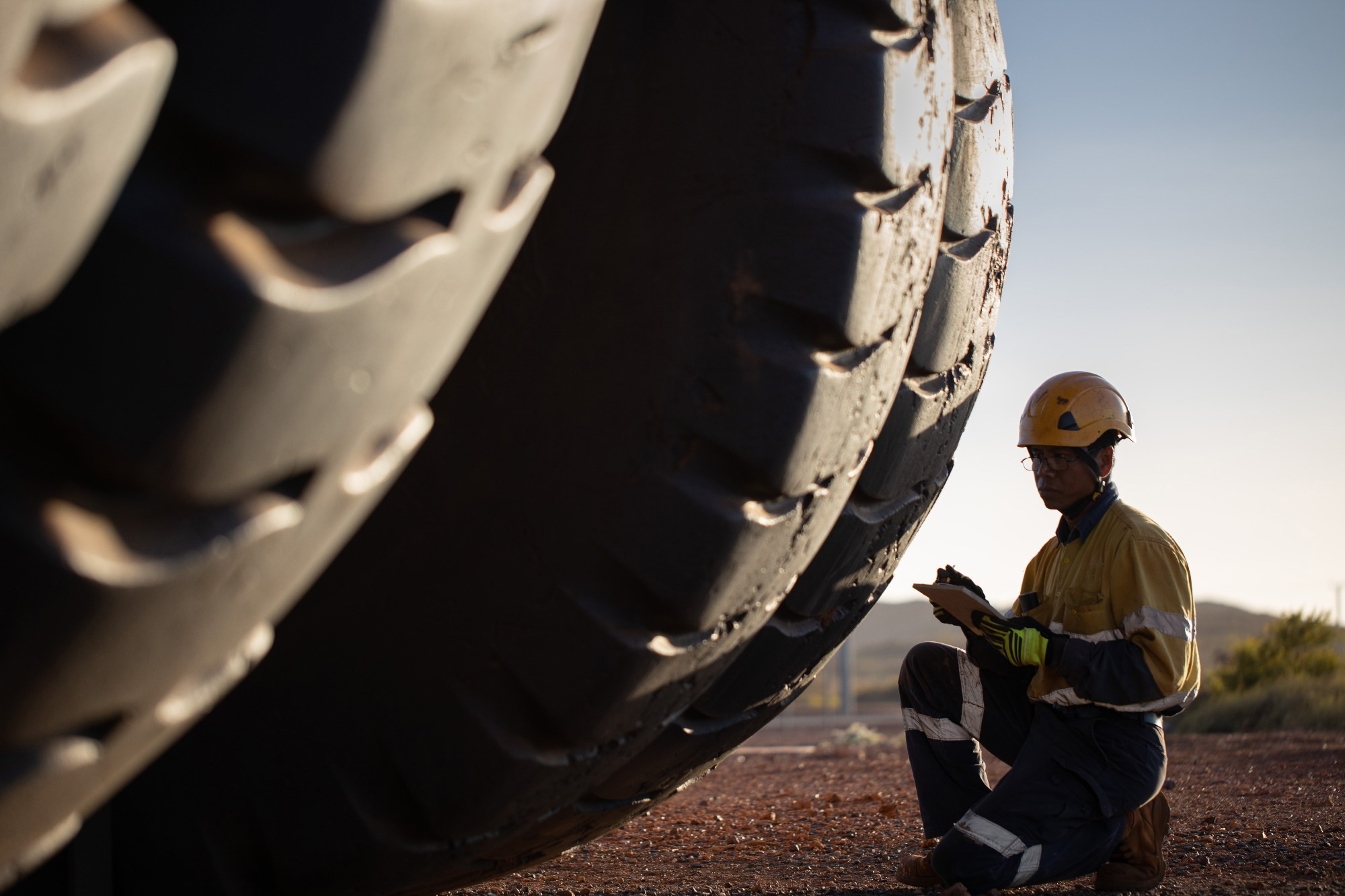In a recent article published in the journal Scientific Reports, researchers investigated the pyrolysis of waste tires to analyze product yields and characteristics, aiming to evaluate its potential for sustainable waste management and material recovery.

Image Credit: King Ropes Access/Shutterstock.com
Background
Mining operations rely heavily on heavy-duty tires, which are crucial for vehicle safety, efficiency, and productivity. Nonetheless, their lifecycle is finite, and disposal becomes an urgent ecological concern given the volume generated worldwide.
The industry’s longevity and cost considerations have driven investigations into recycling methods to recover useful materials from end-of-life tires. Pyrolysis has garnered attention because it enables the breakdown of complex polymer structures into smaller, marketable products, thus transforming waste into resources. Prior research indicates that tire pyrolysis yields volatile organic compounds, solid carbonaceous residues, and gaseous fractions, with product distribution heavily dependent on process parameters such as temperature, residence time, and feedstock characteristics.
The Current Study
The study adopted a rigorous experimental approach, beginning with the collection and characterization of eight popular brands of waste OTR tires from various large Iranian open-pit mines. These samples represented the types of tires most used in local mining fleet operations. Initial analyses consisted of elemental composition and thermogravimetric analysis (TGA), which provided insights into their thermal stability and decomposition behavior, specifically highlighting major mass-loss zones between 250 and 550 °C.
For pyrolysis, a custom-designed laboratory batch reactor was developed. This reactor allowed precise control over temperature, atmospheric conditions, and stirring, replicating industrial conditions as closely as possible. The feedstock was prepared through a comprehensive database of tires from the Iranian mining fleet to accurately simulate the operational environment of mining waste tires, ensuring sample representativeness.
The pyrolysis process was conducted across a series of temperature stages—specifically at 350 °C, 400 °C, 500 °C, and 600 °C—to identify optimal degradation conditions for maximum product yields.
Each run was maintained for a residence time suitable for large tire pieces, notably around 173 minutes at 500 °C, to ensure complete decomposition.
Parameters such as pressure variation, gas emissions, and condensate collection were monitored during the process. Post-reaction, products were separated into three fractions: solid char (including carbon black), liquid oil, and gaseous components.
These fractions' chemical composition and physical properties were characterized systematically to evaluate their potential applications based on material and energy recovery metrics.
Results and Discussion
The experimental results demonstrated that the pyrolysis process effectively decomposed the large, composite tires, producing significant yields of liquid oil and char, with the proportion of gases increasing at higher temperatures due to secondary cracking reactions.
Elemental analysis revealed that the tires contained high carbon content with notable amounts of volatile compounds, consistent with their rubber-based formulations. Thermogravimetric analysis confirmed the primary mass-loss phase between 250 °C and 550 °C, aligning with the optimal pyrolysis temperature identified at 500 °C, where an ideal balance was struck between product yield and process efficiency.
At the chosen temperature of 500 °C, the yields consisted of approximately 40–45% liquid oil, 30–35% solid char, and 20–25% gases by weight. The oil obtained contained a complex mixture of hydrocarbons, primarily benzene, butene, hexane, and pentene, reflecting the decomposition of tire polymers and vulcanized rubber additives common in heavy-duty tires.
The char, rich in carbon black, retained a significant fraction of the original black reinforcement additive, making it a potential substitute for commercial carbon black in tire manufacturing and other industrial applications.
Importantly, variation among the different tire brands affected the exact yield profiles. Tires with higher sulfur content or specific proprietary formulations resulted in slightly different product distributions. Nonetheless, the overall efficiency of conversion remained robust across all brands tested. The management of pressure within the reactor dynamically influenced the process, with pressure peaks corresponding to the formation of condensable vapors, and subsequent releases enabling the collection of high-quality pyrolysis oil.
Conclusion
This research demonstrates that pyrolysis presents a practical and environmentally sustainable pathway for managing the large volumes of waste tires generated by the mining sector. By focusing on ultra-heavy, manufacturer-specific tires used in Iranian mines, the study provides valuable insights into optimizing conditions such as temperature and residence time to maximize product yields.
The effective breakdown of tires at 500 °C yields high-quality oils rich in hydrocarbons, substantial quantities of carbon black-laden char, and gases that can be harnessed for energy purposes.
The variability observed among different tire brands highlights the importance of customizing process parameters to the specific properties of feedstock materials, but overall, the process remains robust and adaptable for large-scale operations.
The integration of pyrolysis within the mining waste management framework offers substantial environmental benefits, reduces disposal costs, and adds value through the recovery of materials that can be reused in manufacturing or energy production.
Source:
Sharifian M., Farhadian A., et al. (2025). Composition analysis of ultrapyrolytic recycled products from various brands of ultra-heavy mining truck waste tires. Scientific Reports 15, 28692. DOI: 10.1038/s41598-025-14755-w, https://www.nature.com/articles/s41598-025-14755-w